Genotype: Explanation and Study Guide
What is Genotype?
The genotype of an organism refers to the genetic makeup of an individual, including the specific combination of genes that it carries. These genes are inherited from the organism's parents and determine its traits and characteristics.
Understanding Genotype:
Genotype is often represented using letters, with one letter from each parent to symbolize the pair of genes for a particular trait. For example, in the case of eye color, "B" might represent the gene for brown eyes and "b" might represent the gene for blue eyes.
Study Guide:
- Learn the basic principles of genetics and heredity.
- Understand the concept of alleles and how they contribute to an organism's genotype.
- Practice Punnett squares to predict the potential genotypes of offspring based on the genotypes of the parents.
- Study the different patterns of inheritance, such as dominant and recessive traits.
- Explore how environmental factors can interact with an organism's genotype to influence its traits.
Key Terms:
- Allele:
- A variant form of a gene, which can be dominant or recessive.
- Heredity:
- The passing on of physical or mental characteristics genetically from one generation to another.
- Punnett Square:
- A diagram used to predict the genotype and phenotype combinations of offspring from a genetic cross.
Understanding genotype is essential for comprehending the inheritance of traits and the diversity of life forms on Earth.
.◂Science Worksheets and Study Guides Second Grade. Mammals and birds
Study Guide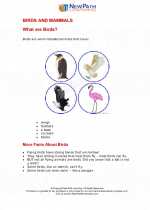 Mammals and birds
Mammals and birds  Activity Lesson
Activity Lesson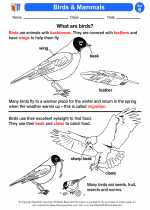 Birds & Mammals
Birds & Mammals  Worksheet/Answer key
Worksheet/Answer key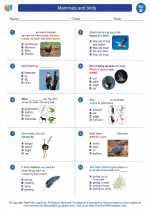 Mammals and birds
Mammals and birds  Worksheet/Answer key
Worksheet/Answer key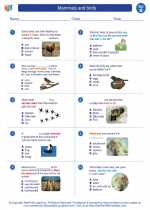 Mammals and birds
Mammals and birds  Worksheet/Answer key
Worksheet/Answer key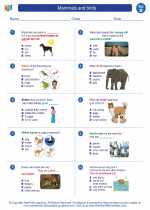 Mammals and birds
Mammals and birds  Worksheet/Answer key
Worksheet/Answer key Mammals and birds
Mammals and birds  Vocabulary/Answer key
Vocabulary/Answer key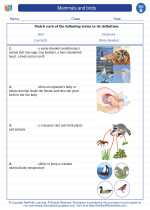 Mammals and birds
Mammals and birds 

 Activity Lesson
Activity Lesson
 Worksheet/Answer key
Worksheet/Answer key
 Worksheet/Answer key
Worksheet/Answer key
 Worksheet/Answer key
Worksheet/Answer key
 Worksheet/Answer key
Worksheet/Answer key
 Vocabulary/Answer key
Vocabulary/Answer key

The resources above cover the following skills:
LIFE SCIENCE (NGSS)
Biological Evolution: Unity and Diversity
Students who demonstrate understanding can:
Make observations of plants and animals to compare the diversity of life in different habitats[Clarification Statement: Emphasis is on the diversity of living things in each of a variety of different habitats.] [Assessment Boundary: Assessment does not include specific animal and plant names in specific habitats.]